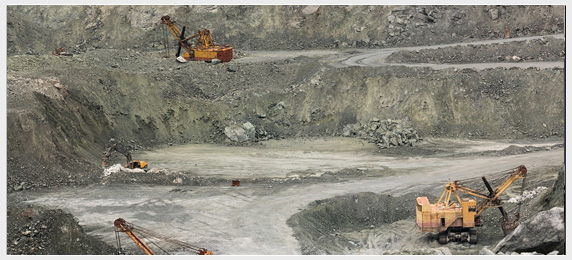Asbestosis
What causes asbestosis?
Asbestos is a naturally occurring fibrous mineral often used in the manufacture of insulation materials around pipes and tanks, in tiles and other building materials. It was used extensively in the 1970's because of its strength and heat resistance. People would often have a plate in the top of their ironing board and would keep a spare one for the purpose of soldering.
White, blue and brown asbestos are all potentially very dangerous and have all been banned in the United Kingdom.
This is because when asbestos is damaged, the fine fibres become airborne and can be inhaled by anyone in the vicinity. When these fibres penetrate lung tissue, they start an inflammatory reaction. The body recognises there is a problem and deploys defensive white blood cells to engulf and attack the alien asbestos fibres.
The asbestos fibres usually try to resist and destroy these blood cells, causing further inflammation and irreversible scarring of the lungs, this condition is known as fibrosis. There is no recognised safe level of asbestos exposure. However, it is generally thought that the higher the levels of asbestos are and the longer the time an individual is exposed to it, the greater their risk will be of developing asbestos related health problems.
Who is affected by asbestosis?
Anyone who is exposed to asbestos can develop an asbestos related illness. Particularly at risk are individuals who have been employed or involved in the building and demolition industry, the manufacturing process of asbestos products and even asbestos spraying. Asbestos fibres can also be carried on infected clothing, so the families of people working with asbestos and those involved in the laundering of an asbestos worker's clothing could also be at risk. Asbestos is now used far less and working practices have been developed to protect people from further exposure to asbestos.
What are the symptoms of asbestosis?
The effects of asbestosis don't tend to appear for many years, the symptoms often manifest between 25 and 40 years later. The main symptom tends to be shortness of breath, in the beginning this will be at the start of exertion but later even resting can leave a victim breathless. Other symptoms include tiredness, coughing, tightness of the chest and severe chest pain. Asbestos can also cause thickening of the pleura, this is the membrane that lines the outside of the lungs. Frequently this will only be noticed when an x-ray is performed for another reason. If this thickening is severe and widespread, it restricts lung function causing the victim to suffer from shortness of breath. Mesothelioma is a rare form of cancer that's only caused by exposure to asbestos. It can occur in the pleura, where it may cause shortness of breath or chest pain. It can even occur in the peritoneum, which is the lining of the abdominal wall, where it may cause intestinal obstruction.
How is asbestosis diagnosed?
A number of factors are considered before diagnosing an individual with asbestosis. These factors could be a history of exposure to asbestos, the pattern of any symptoms experienced by the sufferer, a chest x-ray and lung function tests are usually all that is required to make a diagnosis for asbestosis. People who've been exposed to asbestos are frequently advised to have regular check-ups with a hospital or doctor because it may take years before lung damage may become apparent.
What is the treatment for asbestosis?
Although there's no actual cure for asbestosis, it is vitally important to prevent the symptoms from becoming worse by avoiding any further exposure to asbestos. Medication may be prescribed to the sufferer to relieve symptoms and improve their breathing. Some sufferers of asbestosis tend to suffer with severe breathing problems and are given oxygen.
Further Information
If you would like to know more or are interested in a quote we would be happy to help. Phone us on 07730 446 224, email us at info@survey-safe.com or fill in our enquiry form and we will be in touch as soon as possible.
Survey Safe® - 07730 446 224 - info@survey-safe.com
Registered Office: Wagstaffs, Richmond House, Walkern Road, Stevenage, Herts SG1 3QP
Survey Safe® :: 07730 446 224
Survey Safe®
07730 446 224
Areas we cover
Areas we cover in London :: A
Areas we cover in London :: B
Areas we cover in London :: C
Asbestos articles
Asbestos: A possible cure being developed for Mesothelioma
Asbestos: The importance of regular staff medicals
Mesothelioma and Asbestosis: A comparison
86 per cent of school buildings contain asbestos
Workplace exposure limits
Controlling noise at work
Legionella risk
Asbestos re-inspection
Asbestos related products
Magnesite floor screeds
Asbestos in vermiculite
Chrysotile fuse carriers
Asbestos air monitoring
Asbestos cement roofs
Surviving mesothelioma
Cancer deaths from asbestos at all time high
Asbestosis
Asbestos exposure at ground zero after 9/11
Asbestos insurance claims
More asbestos related prosecutions
New asbestos regulations introduced
Asbestos contractor fined
Asbestos is a hidden health hazard in millions of homes
Asbestos exposure
Contractor fined for removing asbestos in an open wheelbarrow
Past and present uses for asbestos
Asbestos filters used in cigarettes
Privacy policy
Website map







 1
1 2
2 3
3 4
4 5
5



